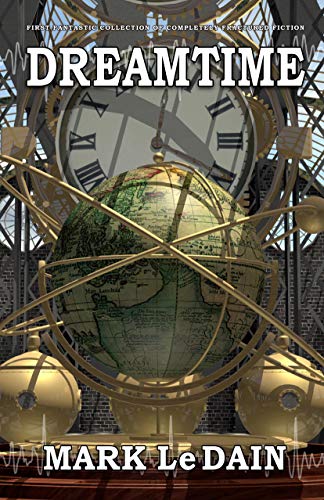DREAMTIME might more aptly be titled “Nightmare Time”, due to the unpleasant and often frightening future foretold in short stories. Subtitled “First Fantastic Collection,” it is the opening volume in the author’s “Completely Fractured Fiction” sci-fi/fantasy series containing tales reminiscent of the social messages in Rod Serling’s classic Twilight Zone television series.
Previously an investment banker, Canadian author Mark Le Dain (While We Dream, 2016) is a former investment banker who works as a strategist for a technology company specializing in artificial intelligence innovation in the oil and gas industry. Climate change, high tech tools, bioengineering, and social policy have all gone awry in Le Dain’s dystopia that, in some stories, seem frighteningly possible in the near future. For example, “Auto” concerns a student worried about exams who considers receiving a drug implant called Auto—mostly intended for soldiers—that compels attention to a single goal. Fear of driverless technology steers “Scorpio Motors,” a story about a single-minded car that will do anything to protect its owner.
Other stories connect to familiar concerns, like overpopulation or financial trouble, but are located in a more distant time and involve extreme solutions. In “The Icarus,” students in a crowded world feel real, but start falling apart when they realize they only exist in a giant database. And in “Capital Markets,” the value of each person’s life is quantified financially and becomes like a reverse mortgage that wealthy citizens purchase chunks of until no value is left.
Le Dain’s spare writing style is strong on plot, characterization, and communication of difficult technological ideas. But DREAMTIME is weak, and perhaps purposely so, when it comes to sensory detail and setting. The stories lack smell, flavor, and strong physical sensation — the sort of details that help readers experience the fictional world. Although likely intentional, limiting the characters interactions with nature to brief glimpses out windows is disturbing. Nature, like setting, is humanizing. But the characters in Le Dain’s stories spend most of their time in buildings and rooms that are sterile white cubes in which doors and windows are sometimes difficult to see.
In real life, it’s hard to force oneself awake from a bad dream, because the desire to overcome its menace is powerful. Similarly, despite the bleak blankness surrounding Le Dain’s characters, you can’t help but stick around to see how they handle their nightmares.
Sharp plotting and characters who face nightmarish problems make it difficult to put DREAMTIME down, despite its (possibly intentional) lack of specifics to setting and sensory details.
~Alicia Rudnicki for IndieReader

